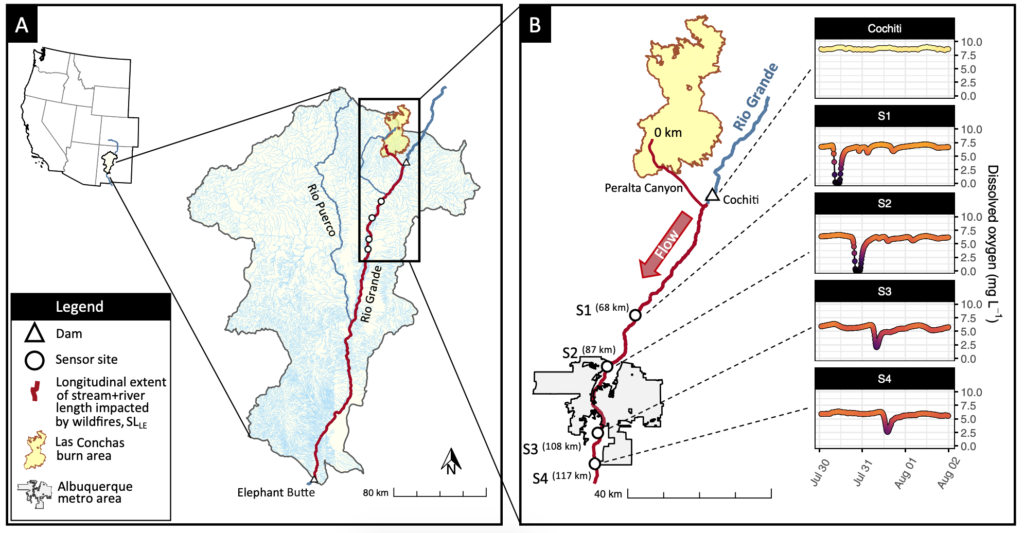Featured image: Wildfire in Portugal by Michael Held on Unsplash
The wildfire season is getting longer and more severe, and current models suggest that this trend will only continue as anthropogenic climate change gets worse. Wildfires dramatically alter the landscape they inundate, leaving vegetation charred and the atmosphere ashy. While jarring, there is one consequence of these natural disasters that isn’t fully understood: their effect on rivers and streams. While it may seem intuitive to think that wildfires disrupt the hydrologic cycle and cause rivers to dry up or shrink, Grady Ball and colleagues found the opposite: wildfires are making our rivers longer.
The researchers ran an analysis of stream and river length in burned areas across the Western United States (specifically those areas between the West Coast and the eastern borders of Montana, Wyoming, Colorado, and New Mexico) from 1984 to 2014. They found that not only were streams getting longer, they also discovered that wildfires have a drastic impact on the level of oxygen present in river water.

Across the time and space studied, stream length in the total burned areas increased by an average of 342 kilometers per year. In other words, for every year that passed, the total stream length in all areas that experienced wildfires increased by the distance from New York City to Boston. Grady Ball and the team are also quick to note that this figure is likely an underestimation considering their dataset did not account for all wildfires. They also found that every square kilometer of burned area yields approximately one kilometer of stream length. While this analysis helps understand what’s happening to the length of the West Coast’s rivers, it doesn’t tell us what’s happening inside them.
The 2011 Las Conchas wildfire was the second largest wildfire in New Mexico’s history, and burned 630 square kilometers. Within that burned area, there were 388 kilometers of streams. Using historical data from water quality sensors, Ball and colleagues took a closer look at a section of the river downstream from the burned area to assess the fire’s effects. As monsoon rain carries burned material into the river channel, it reduces the amount of dissolved oxygen for a period of time downstream. This longitudinal behavior, that is, how the effects of fire events upstream will cascade downstream, is demonstrated by the Las Conchas Fire’s effect on dissolved oxygen.
While the fire occurred in June 2011, the researchers identified 11 post-fire rain pulses that reduced oxygen concentration in the Rio Grande to below the threshold for aquatic life throughout July and August. Four of these events reached “anoxia” (total or near complete depletion of oxygen in water) for up to four hours. Cochiti Dam in the Rio Grande upstream from the burned area served as a control, so Ball and fellow researchers could be sure that the reduced oxygen in the downstream water sensors was an effect of the fire.

All hope is not lost, according to Ball and fellow researchers. Equipped with the knowledge of this first-of-its-kind study, the researchers are broadening our understanding of these complex natural disasters, and offer their perspective on how future researchers and local and federal governments can better study wildfires and their impact on the hydrosphere.
First, allot more money to wildfire preparedness. Second, focus on longitudinal behavior, that is, focus on how the effects of fire events upstream will cascade downstream. Third, incorporate higher frequency data in environmental monitoring, since wildfires occur over relatively short periods of time. The methods and outlook presented by Ball et al. help us unravel the severe and far-reaching effects of these devastating fire events.
Wildfires are making our rivers longer by Kevin Hurler is licensed under a Creative Commons Attribution-ShareAlike 4.0 International License.

